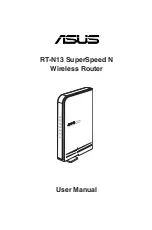
Authentication and User Management
14.4 Configuring Authentication Servers
SCALANCE W1750D UI
Configuration Manual, 02/2018 , C79000-G8976-C451-02
211
Parameter
Description
Filter
Specify the filter to apply when searching for a user in the LDAP database.
The default filter string is
(objectclass=*).
Key Attribute
Specify the attribute to use as a key while searching for the LDAP server.
For Active Directory, the value is sAMAccountName
Timeout
Enter a value between 1 and 30 seconds. The default value is 5.
Retry count
Enter a value between 1 and 5. The default value is 3.
Dead Time
Specify a dead time for the authentication server in minutes within the
range of 1–1440 minutes. The default dead time interval is 5 minutes.
When two or more authentication servers are configured on the AP and a
server is unavailable, the dead time configuration determines the duration
for which the authentication server would be available if the server is
marked as unavailable.
–
TACACS—To configure TACACS server, select the option and configure the following
parameters:
Parameter
Description
Name
Enter a name for the server.
IP address
Enter the IP address of the TACACS server.
Auth Port
Enter a TCPIP port used by the server. The default port number is
49.
Shared Key
Enter a secret key of your choice to authenticate communication
between the client and the server.
Retype Key
Re-enter the shared key.
Timeout
Enter a number between 1 and 30 seconds to indicate the timeout
period for requests. The default value is 20 seconds.
Retry Count
Enter a number between 1 and 5 to indicate the maximum number of
authentication attempts. The default value is 3.
Dead time
Specify a dead time in minutes within the range of 1–1440 minutes.
The default dead time interval is 5 minutes.
Session authorization Enables or disables session authorization. When enabled, the op-
tional authorization session is turned on for the admin users. By
default, session authorization is disabled.
Note
You can also add TACACS server by selecting the New option when configuring au-
thentication parameters for management users. For more information, see Configuring
Authentication Parameters for Management Users (Page 200).
















































